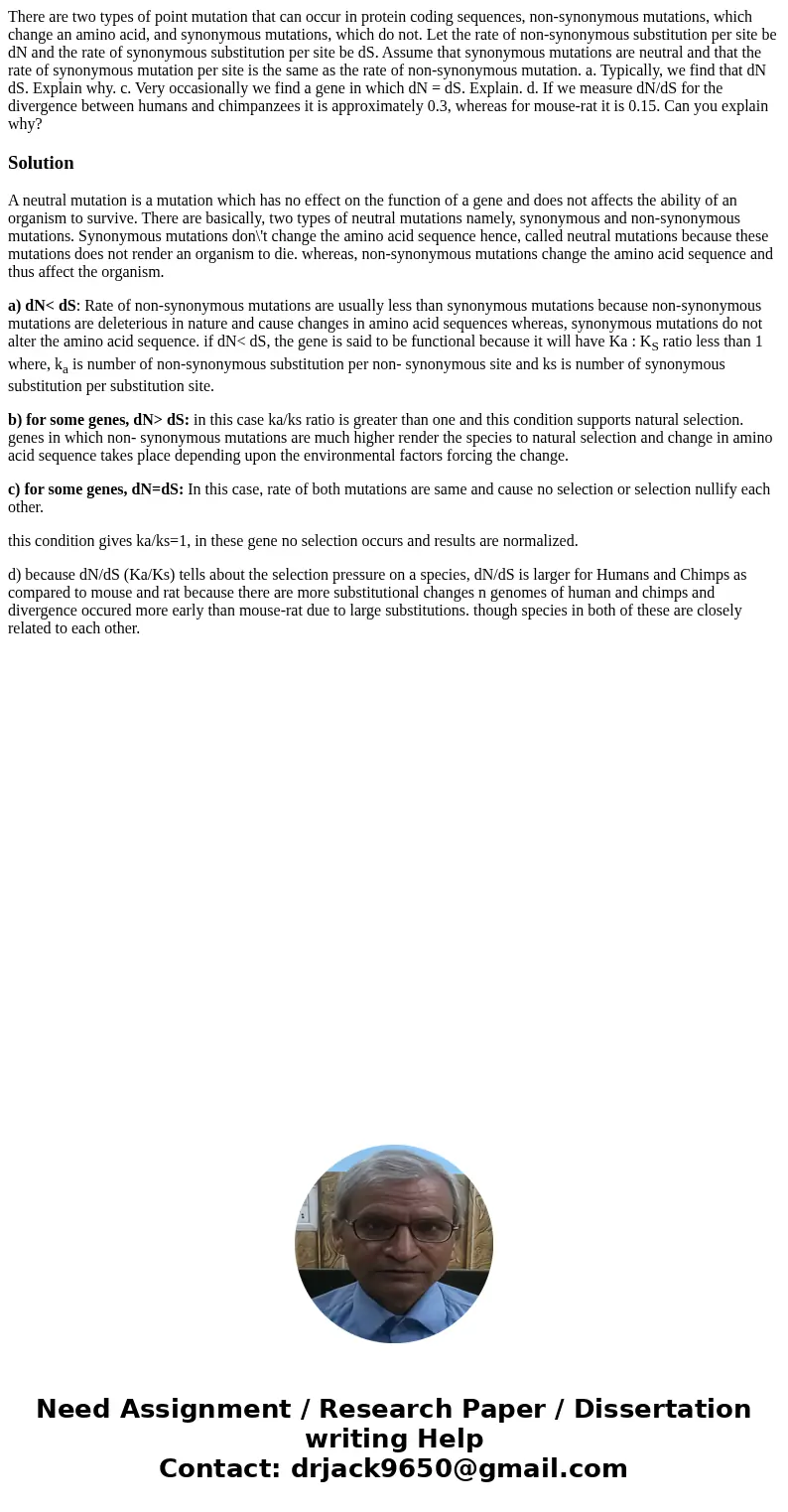There are two types of point mutation that can occur in prot
Solution
A neutral mutation is a mutation which has no effect on the function of a gene and does not affects the ability of an organism to survive. There are basically, two types of neutral mutations namely, synonymous and non-synonymous mutations. Synonymous mutations don\'t change the amino acid sequence hence, called neutral mutations because these mutations does not render an organism to die. whereas, non-synonymous mutations change the amino acid sequence and thus affect the organism.
a) dN< dS: Rate of non-synonymous mutations are usually less than synonymous mutations because non-synonymous mutations are deleterious in nature and cause changes in amino acid sequences whereas, synonymous mutations do not alter the amino acid sequence. if dN< dS, the gene is said to be functional because it will have Ka : KS ratio less than 1 where, ka is number of non-synonymous substitution per non- synonymous site and ks is number of synonymous substitution per substitution site.
b) for some genes, dN> dS: in this case ka/ks ratio is greater than one and this condition supports natural selection. genes in which non- synonymous mutations are much higher render the species to natural selection and change in amino acid sequence takes place depending upon the environmental factors forcing the change.
c) for some genes, dN=dS: In this case, rate of both mutations are same and cause no selection or selection nullify each other.
this condition gives ka/ks=1, in these gene no selection occurs and results are normalized.
d) because dN/dS (Ka/Ks) tells about the selection pressure on a species, dN/dS is larger for Humans and Chimps as compared to mouse and rat because there are more substitutional changes n genomes of human and chimps and divergence occured more early than mouse-rat due to large substitutions. though species in both of these are closely related to each other.

 Homework Sourse
Homework Sourse